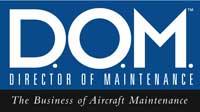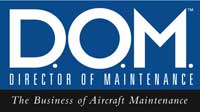
Norms: Unwritten Rules That the majority Dictates and Follows


While Norms is No. 12 on the Dirty Dozen list, that is not necessarily its order of importance.
By 1993, I had been an accident investigator for seven years. I found the safety investigation work interesting and reactive. First, you (the maintenance person) made a human error. Then, the pilot (and perhaps others) had to die so I could investigate as to why and determine means to prevent it from reoccurring. After many years I began to realize that all I had to do with some accidents was change the date, name, location and aircraft registration and I had the same accident. (This is a strong oversimplification.)
When the opportunity came to jump ship in order to develop Crew Resource Management (CRM) for maintenance (as a result of the 1989 Dryden accident in which 24 people lost their lives), I took it. I started with a clean slate and an Industry Advisory Committee that included the FAA and Canadian military. The Canadian military kept records of its maintenance error accidents and provided a box with thousands of errors on folded, holes-on-the-side paper piled more than a foot high. By reading each of those records over many months, I developed the 12 contributing factors that are now known as the “Dirty Dozen.” They are the basis of the human performance in maintenance workshop and my posters were developed to help maintain the awareness that the training provided.
Habits and Norms
Norm is short for normal, as in “the normal way we do things around here.” They are all around us and are not necessarily bad. A norm is like a habit. The only difference is that a habit is done by one person, whereas a norm is done by a group of people.
Looking at habits helps us understand norms. Habits are things we have learned to do without thinking (with the conscience mind, at least). The habit gets easier each time we do it until we can do the task without even thinking about what we are doing. Norms are the same, as after a while we don’t even think about just how safe or legal the way we are doing a task is.
Habits usually enable us to do a task quicker. Norms are usually done for the very same reason. Habits are easy to develop but hard to change. The same can be said for a norm unless it causes an accident.
The Wet Monkeys
You might have heard the story about the five monkeys in a cage. In the middle of the cage was a ladder with bananas on the top.
Each time a monkey started to go up the ladder, the others were soaked with cold water. After a while the wet monkeys would beat up anyone who tried to climb the ladder. In time, no one dared or tried to climb up the ladder.
One of the monkeys was then substituted with a new monkey. When he saw the bananas, he tried to climb the ladder to get them. The other monkeys beat him. Soon he knew not to climb the ladder, but not the original reason why (water soaking). The remaining four original monkeys were substituted one at a time with new monkeys with the same result. The new monkeys would participate in the beatings. What was left was a group of five monkeys that, even though they had never received a cold shower, continued to beat up any monkey that attempted to climb the ladder.
If it was possible to ask the monkeys why they would beat up all those who attempted to go up the ladder, I’d bet you the answer would be something like, “I don’t know — that’s just how things are done around here.”
Does it sound familiar? A norm is born. We humans use peer pressure instead of beatings, but the results are the same.
The Types of Norms
Positive. This is expected behavior condoned for the betterment of the group. While there is no law to order us not to do something, it is expected that we will not do it. We do not “pass wind” in church. A positive norm at work that I recall was a final walk around by the person on the headset just before pushback. There was no requirement for it but we used to call it “the beer can walk” to ensure that the “baggage smashers” had not left any beer cans in the engine intake or exhaust. Actually, it was to ensure that all the doors were closed and there was nothing behind the aircraft. There are many positive norms that we sometimes call common courtesy. For example, always leave the workspace clean for the next person.
Neutral. Neutral norms are neither positive nor negative but are done often from habit or courtesy. We would wave to the captain as he departed and they would often flash the landing light. I’ve seen where the ground crew stands to ridged attention as the aircraft departed. That could be a carryover from the military.
Negative. These can become “killer norms.” They often enable things to be done quicker but increase the odds that a negative outcome will occur. The negative norm of pencil whipping the tire pressures in order to meet the departure time is a classic example.
While we never experienced any negative outcomes, the same norm in the true video “Death of an Airline” resulted in the loss of 261 lives and the death of an airline. We failed to see the danger in the shortcut or accepted practice.
Negative norms often develop from normalization of variance. This occurs when something doesn’t seem right but each time that there is success with the “something,” it begins to become accepted.
The classic example of a normalization of variance becoming a killer norm occurred on Jan. 28, 1986, when the space shuttle Challenger’s O-rings failed due to the colder-than-normal temperature. The shuttle blew up on takeoff, taking seven lives with it. They had failed to see the danger in the shortcut or now-accepted practice.”
Fast-forward to Feb. 1, 2003, and the space shuttle Columbia reenters earth’s atmosphere looking like a roman candle. The killer norm, responsible for seven more lives, was the pieces of insulation foam that would come off the fuel tank and strike the shuttle during takeoff.
It was not considered dangerous and 112 flights prior to the final Columbia flight served to normalize the odd piece of foam breaking off. This is no different than the normalization of skipping the odd tire pressure reading or when you feel that something doesn’t seem quite right, but you justify it by the fact that nothing has gone wrong up to date.
What can we do about negative norms, especially when they haven’t yet been a problem? The answer is relatively simple. Just ask yourself this one important question:
Does what we are doing enhance or detract from an established safety standard?
Thus, you have to:
1. Look for norms where you work and live
2. Identify the positive from the negative
3. If you find that it’s a habit (only you do it) and it’s negative, then work on it.
4. You’ve got to, Accentuate the positive, Eliminate the negative, Latch on to the affirmative, Don’t mess with Mr. In-Between (Song by Johnny Mercer, 1945)
Mercer had it right way back then. As professionals, we must stand up for what we know is right. This won’t be easy but we need to maintain our standards as professionals.
Failure to do so is like walking in a minefield while knowing that an unrecognized negative norm could explode at any time. Standing up to a negative norm will call for assertiveness to stand up to something that is “not quite right.” The fact that everyone is doing it does NOT make it right. Peer pressure is a strong motivator to go along with the group. As they will tell you, “Nothing has ever gone wrong by doing it this way yet.” If it does not enhance an established safety standard then — as professionals — we must not do it. Standing up for what you know is right is one characteristic of a professional — and we are professionals!
 Gordon Dupont worked as a special programs coordinator for Transport Canada from March 1993 to August 1999. He assisted in the development of Human Performance in Maintenance (HPIM) Parts 1 and 2. The “Dirty Dozen” maintenance Safety posters were an outcome of HPIM Part 1.
Gordon Dupont worked as a special programs coordinator for Transport Canada from March 1993 to August 1999. He assisted in the development of Human Performance in Maintenance (HPIM) Parts 1 and 2. The “Dirty Dozen” maintenance Safety posters were an outcome of HPIM Part 1.
Dupont has been an aircraft maintenance engineer and commercial pilot in Canada, the United States and Australia.
Dupont, who is often called “The Father of the Dirty Dozen,” has provided human factors training around the world. He retired from Transport Canada in 1999 and is now a private consultant. He is interested in any work that will serve to make our industry safer. Visit www.system-safety.comfor more information.
